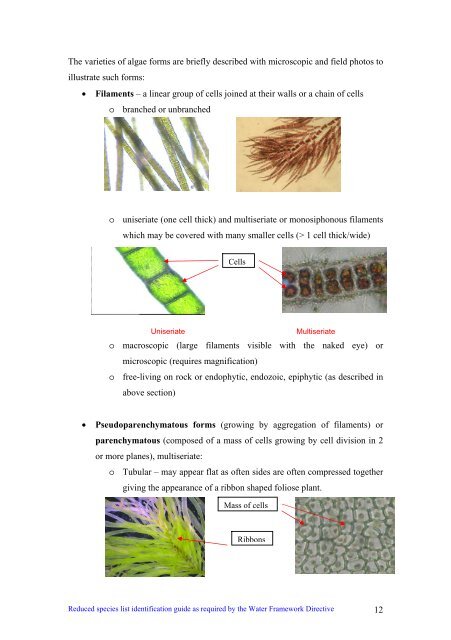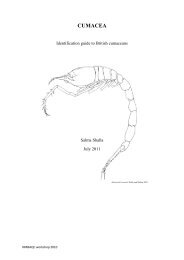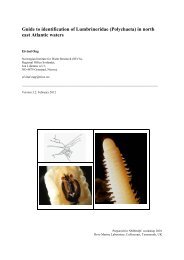s A Field Guide to the British Seaweeds - NMBAQC
s A Field Guide to the British Seaweeds - NMBAQC
s A Field Guide to the British Seaweeds - NMBAQC
Create successful ePaper yourself
Turn your PDF publications into a flip-book with our unique Google optimized e-Paper software.
The varieties of algae forms are briefly described with microscopic and field pho<strong>to</strong>s <strong>to</strong><br />
illustrate such forms:<br />
• Filaments – a linear group of cells joined at <strong>the</strong>ir walls or a chain of cells<br />
o branched or unbranched<br />
o uniseriate (one cell thick) and multiseriate or monosiphonous filaments<br />
which may be covered with many smaller cells (> 1 cell thick/wide)<br />
Cells<br />
Uniseriate Multiseriate<br />
o macroscopic (large filaments visible with <strong>the</strong> naked eye) or<br />
microscopic (requires magnification)<br />
o free-living on rock or endophytic, endozoic, epiphytic (as described in<br />
above section)<br />
• Pseudoparenchyma<strong>to</strong>us forms (growing by aggregation of filaments) or<br />
parenchyma<strong>to</strong>us (composed of a mass of cells growing by cell division in 2<br />
or more planes), multiseriate:<br />
o Tubular – may appear flat as often sides are often compressed <strong>to</strong>ge<strong>the</strong>r<br />
giving <strong>the</strong> appearance of a ribbon shaped foliose plant.<br />
Mass of cells<br />
Ribbons<br />
Reduced species list identification guide as required by <strong>the</strong> Water Framework Directive 12




